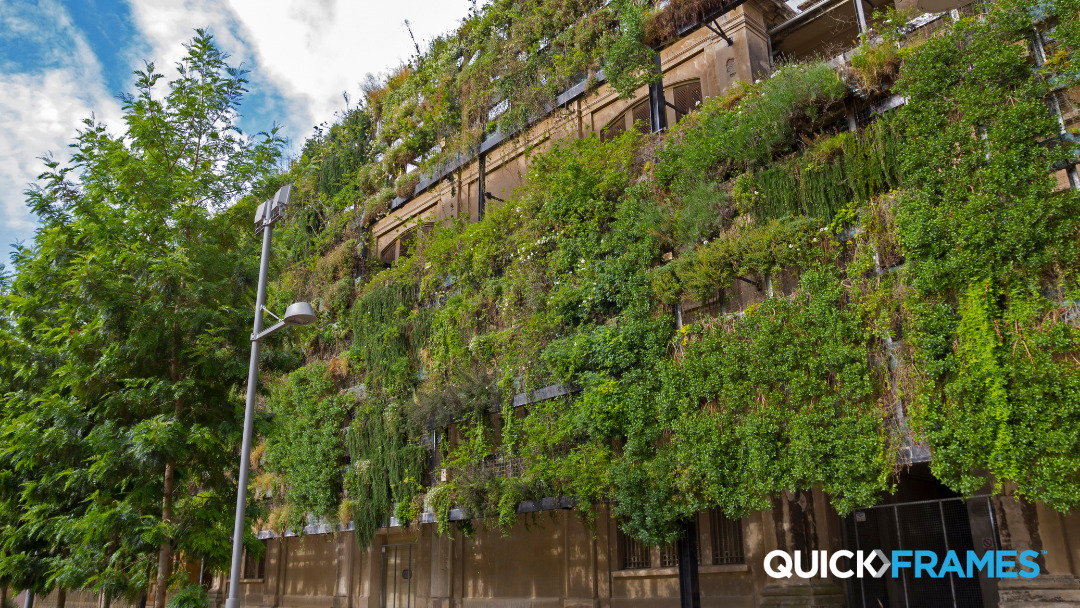Green is What We’re Seeing in Commercial Construction
By Gregg Kussmann, Partner & Director of Business Development, QuickFrames
Protecting the environment has always been important, but it’s become an even more urgent and widely discussed issue In the last decade. Individuals and entire industries are doing their part to cut down on waste, harmful emissions and practices that can hurt human beings and our planet. We’re glad to report that commercial construction is no exception. Here’s a look at some of the ways that green building is being embraced today.
The Bright Side
There are some promising stats to back up the power of environmentally friendly construction. Here are a few in particular that demonstrate the positive impact of green practices on the Earth, health and project profitability:
- The green building market in the U.S. is expected to hit $99.8 billion by 2023.
- The global green building industry has the potential to cut energy consumption by 50% or more by 2050.
- Green buildings have an overall 7% higher asset value compared to non-green buildings.
- Working in well-ventilated environments improves brain function by 101%.
- LEED Gold buildings have 19% lower maintenance costs.
Doing Our Part
LEED (Leadership in Energy and Environmental Design) is a program created by the U.S. Green Building Council. This program promotes “green building,” the practice of designing, constructing, and operating buildings using fewer resources. We make steel building frame components (rooftop equipment supports), and steel is a green building material that helps achieve LEED certification.”
Furthermore, QuickFrames bolt-on, adjustable roof frames are designed to be easily moved when mechanical locations change. This reduces the opportunity for waste compared to welded-in steel angle iron frames that have to be abandoned in-place or removed, thrown away and then remade in such a scenario. We’re also mindful in our manufacturing facility to minimize scrap steel and we always recycle any steel we can’t use.
Vegetation Becomes the Star
Landscaping has always been an important part of a building’s final aesthetic, but planting actual greenery has become much more than just a visual touch. In fact, planters are now being built into plans more often, and grass is being used in place of excessive concrete. What’s more, vegetative roofs are being added to many buildings. These roofs can reduce maintenance costs since they’re naturally insulating, and they can also improve air quality and enrich the general environment.
Since the pandemic forced people to stay cooped up inside their homes, and made it clear there’s a reduced risk of viral transmission in outdoor spaces, people are looking to be outside as often as possible. Being among some form of nature, even just simple plants in an urban building, can be healing and beneficial.
Creative Applications
Another great use of vegetation is to create living walls, which are becoming quite popular. This is exactly what it sounds like; a wall that has been covered with compost or plants and shrubbery. They promote the recycling of organic material and help bring the outside inside. The City of London Corporation is said to be working on an excellent example of this, a five-story wall that will be made from recycled aluminum and compost (which will then serve as the soil for additional plants).
Some organizations are incorporating green barriers into their designs, which is when flora (especially trees, bushes or fences covered in a vine-like ivy) is used to surround buildings that emit pollution or other waste. The live plants then help mitigate the air pollution caused by such buildings. Others still are working to use renewable energy sources, smart lighting, sustainable building materials, low-carbon concrete and energy-efficient HVAC systems to offset their emissions of carbon dioxide and other greenhouse gases.
The takeaway? The more that individuals, companies and industries get involved with protecting the planet – and one another – the more inviting and supportive our workplaces will become, the higher we’ll see green building values reach, and the more energy we’ll save along the way. It’s exciting to see these trends become mainstream, and we’re eager to watch as more emerge in the near future.
Need bolt-on, adjustable rooftop unit support frames for your next commercial or steel frame construction project? Just give us a call or start a fast quote.


